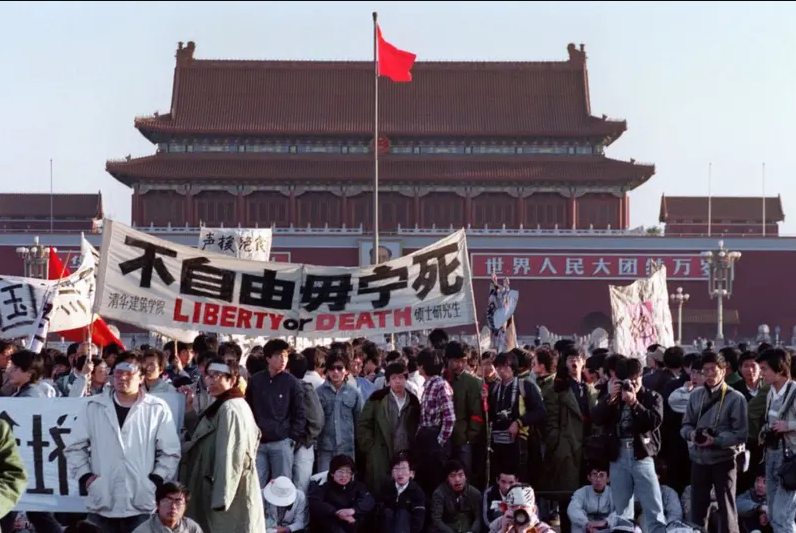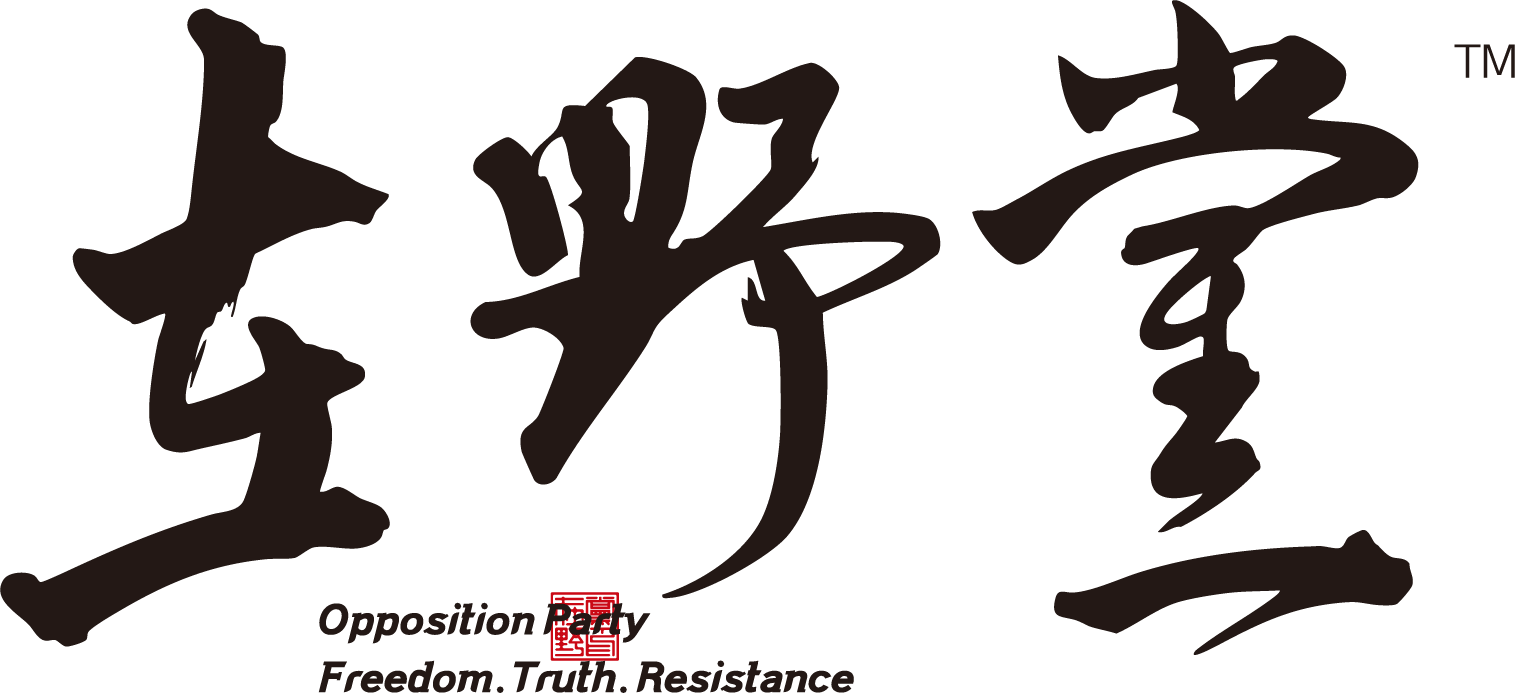Jiangyou and Tiananmen Square: When people go to streets again
作者:毛一炜(YIWEI MAO)
编辑:冯仍 责任编辑:罗志飞
2025年7月22日,四川江油,一段14岁女孩被围殴的视频引爆社交媒体。视频中,三名施暴女生不仅肆意辱骂、掌掴受害者,还扬言“进派出所几次都没事”,一副对法律毫无敬畏的姿态。江油警方随后通报称,受害人“轻微伤”,施暴者因未成年,仅予训诫。这一处理结果,反而激起了更大的民愤。

1989年8月4日,愤怒的市民走上街头,在江油市政府门前高唱国歌、呼喊口号,要求惩治施暴者、重新鉴定伤情、追责渎职警员。抗议持续到深夜,警方出动封锁道路并强制清场,多人被捕,现场爆发肢体冲突。这一幕,让人想起了另一个历史节点:1989年六四天安门事件。在街头民众高呼正义的那一刻,“我们要一个说法”的呐喊,穿越36年的时空,令人动容。
从江油回望天安门
六四是一场全国性的学生运动,最终演变为政治危机,提出的是“新闻自由”“民主改革”等深层制度诉求。而江油抗议则聚焦于一件校园欺凌案件的处理失当——一个地方性的执法问题,看似微小,却直击了民众对法律与权力的集体不信任。
六四的抗议者主要是大学生和知识分子,而江油的参与者是普通市民、家长、中小学生,是更“接地气”的沉默大多数。他们不是政治活动家,只是想要一个公道。
这也许正是今天中国的真实图景:政治改革的呼声或许已经退场,但对公平、对正义、对真相的渴望从未熄灭。江油事件像一记闷雷,提醒人们,即使高压维稳多年,街头依旧可能成为人民表达怒火的地方。
“轻微伤”与沉重的社会创伤
江油警方的“轻微伤”鉴定,成为引发抗议的直接导火索。这一判定不仅被网友质疑“伤害司法常识”,更折射出公众对权力腐败、执法不公的深层不信任。
更令人震惊的是,视频中施暴者反复炫耀自己的“豁免权”,仿佛未成年人保护法成了违法的挡箭牌。这一现象揭示出《未成年人保护法》在执行中的巨大漏洞,也提醒我们:当制度设计被滥用,它保护的就不再是孩子,而是恶意本身。
而在另一边,更加沉重的是信息的消失。这场抗议从一开始就被刻意“降温”甚至“消音”。微博没有热搜,抖音上视频迅速被删除,B站屏蔽关键词,知乎关闭讨论。一件本该引发全国热议的社会事件,反而在主流中文互联网平台上变得难以搜索、无法转发。
哪怕只是转发抗议视频、质疑警方通报,很多账号也遭到限流或封禁。于是,暴力发生了、愤怒发生了、抗议发生了,但它在国内网络上“没有发生”。
江油不是终点,而是序章?
江油的抗议已被镇压,媒体被控评,视频下架,话题降温。但这件事是否真的过去了?不是。它留下了深刻的记忆,也留下了一个问题:当合法的渠道不能表达诉求时,民众还有哪些方式争取正义?
36年前,北京的大学生曾试图用鲜血唤醒制度的变革;今天,江油的家长和中学生尝试用歌声、国旗与呼喊,换来一句公道。但政府依旧选择沉默与清场。历史不会简单重复,却会在压抑与沉默中,酝酿下一次觉醒。
写在最后
作为身在海外的中国人,我看到江油家长的眼泪、江油女孩的委屈、江油政府的冷漠,我想说:当“进过派出所也没事”成为施暴者的底气,真正的问题,就早已超越了校园暴力事件。
六四之后,有人说中国人再不会上街;而江油告诉我们,街头的火种,哪怕微弱,也从未熄灭。它等待的,只是一个重新燃烧的机会。
Jiangyou and Tiananmen Square: When people go to streets again
Abstract: In 2025, Jiangyou caused public protests because of the unfair handling of the school violence case, and the scene was reminiscent of the Tiananmen Square incident in 1989. The article analyzes the differences between the two demands and groups, and reveals that under high pressure and blockade, the people’s pursuit of fairness and justice is still there.
Author: Yiwei Mao
Editor: Feng Still Responsible Editor: Luo Zhifei
Translator: Ming Cheng
On July 22, 2025, in Jiangyou, Sichuan, a video of a 14-year-old girl being beaten exploded on social media. In the video, the three violent girls not only abused and slapped the victims wantonly, but also threatened that “it’s okay to go to the police station several times”, with a posture of no awe of the law. Jiangyou police then reported that the victim was “slightly injured”, and the perpetrator was only reprimanded because he was underage. The result of this treatment, on the contrary, aroused greater public anger.

On August 4, 1989, angry citizens took to the streets, singing the national anthem and shouting slogans in front of the Jiangyou Municipal Government, demanding that the abusers be punished, the injuries should be re-identified, and the police officers should be held accountable. The protest lasted until late at night. The police sent to block the road and force the field to clear. Many people were arrested, and physical conflicts broke out at the scene. This scene reminds people of another historical node: the Tiananmen Incident on June 4th in 1989. At the moment when the street people shouted justice, the cry of “we want a statement” traveled through 36 years of time and space, which was touching.
Looking back at Tiananmen Square from Jiangyou
June 4th is a national student movement, which eventually evolves into a political crisis, put forward deep institutional demands such as “freedom of the press” and “democratic reform”. Jiangyou’s protest focused on the mishandling of a school bullying case – a local law enforcement problem, which seems to be small, directly hits the people’s collective distrust of the law and power.
The protesters of June 4th are mainly college students and intellectuals, while the participants of Jiangyou are ordinary citizens, parents, primary and secondary school students, who are the more “down-to-earth” silent majority. They are not political activists, they just want justice.
This may be the real picture of China today: the call for political reform may have left, but the desire for fairness, justice and truth has never been extinguished. The Jiangyou incident is like a muffled thunder, reminding people that even if the high pressure has been stable for many years, the streets may still be a place for people to express their anger.
“Slight injury” and heavy social trauma
The “minor injury” identification by the Jiangyou police became a direct trigger for the protest. This judgment is not only questioned by netizens to “harm the common sense of justice”, but also reflects the public’s deep distrust of power corruption and injustice in law enforcement.
What’s more shocking is that the offenders in the video repeatedly show off their “immunities”, as if the Law on the Protection of Minors has become a shield against the law. This phenomenon reveals the huge loopholes in the implementation of the Law on the Protection of Minors, and also reminds us that when the system design is abused, what it protects is no longer children, but malice itself.
On the other hand, what is heavier is the disappearance of information. The protest was deliberately “cooled down” and even “muted” from the beginning. There are no trending searches on Weibo, the videos on TikTok were quickly deleted, the B station blocked the keywords, and Zhihu closed the discussion. A social event that should have caused a heated discussion throughout the country has become difficult to search and forward on the mainstream Chinese Internet platform.
Even if it is just to forward protest videos and question the police report, many accounts have been restricted or blocked. Therefore, violence, anger and protests occurred, but it “did not happen” on the domestic network.
Jiangyou is not the end, but the prologue?
Jiangyou’s protest has been suppressed, the media has been accused of commenting, the video has been removed from the shelves, and the topic has cooled down. But is this matter really over? No. It leaves a deep memory and a question: when legal channels cannot express their demands, what other ways can the people fight for justice?
Thinty-six years ago, college students in Beijing tried to awaken the reform of the system with their blood; today, parents and middle school students in Jiangyou tried to exchange songs, national flags and shouts for justice. But the government still chooses to remain silent and clear the field. History will not be repeated simply, but will brew the next awakening in oppression and silence.
Write at the end
As a Chinese overseas, I see the tears of Jiang You’s parents, the grievances of Jiang You girls, and the indifference of Jiang You’s government. I want to say that when “it’s okay to enter the police station” becomes the confidence of the violent, the real problem has long gone beyond the campus violence.
After June 4th, some people said that Chinese people would never go to the street again; but Jiangyou told us that the fire on the street, even if it was weak, would never be extinguished. What it is waiting for is just a chance to burn again.






